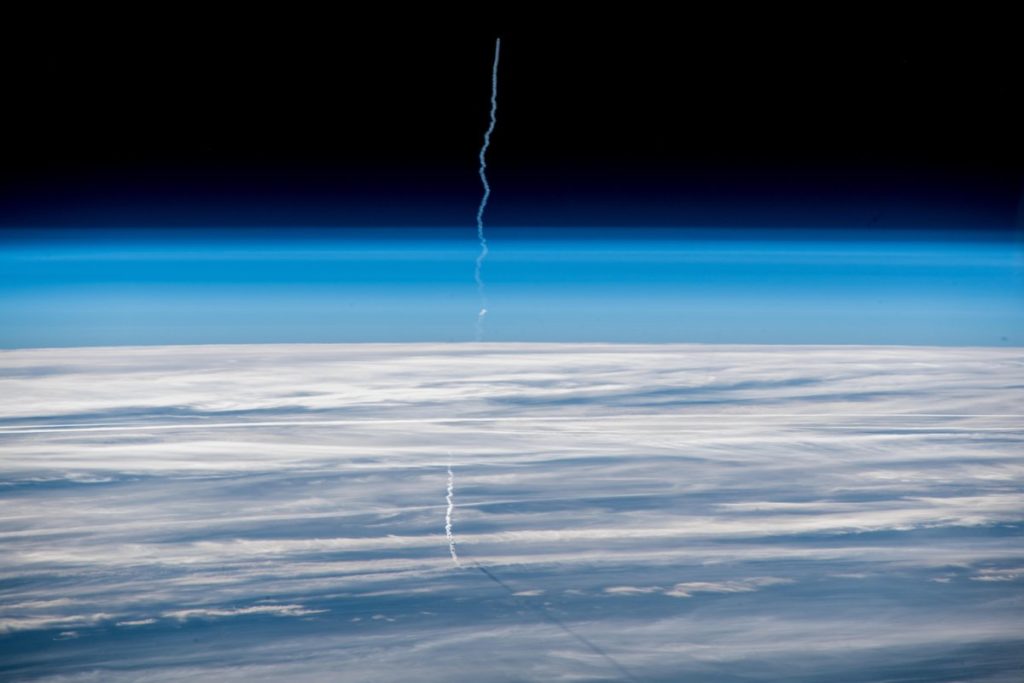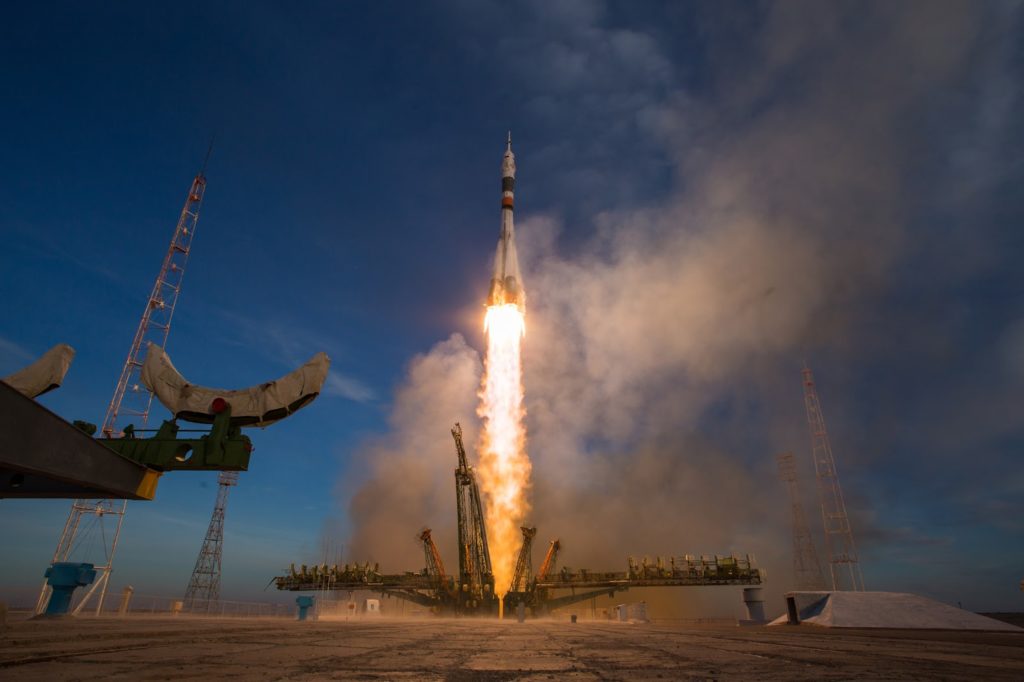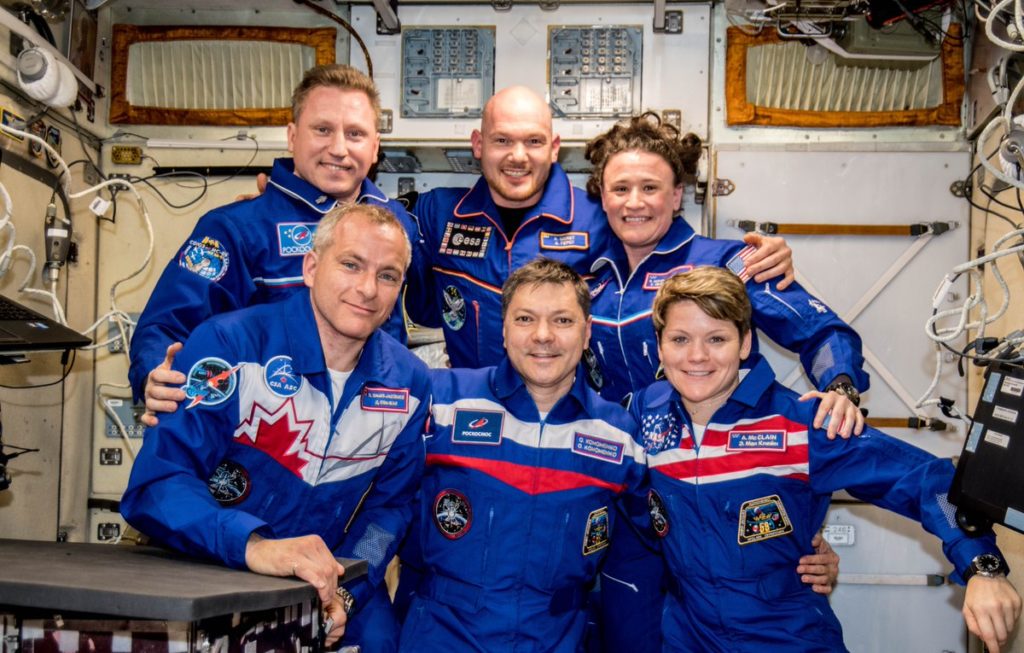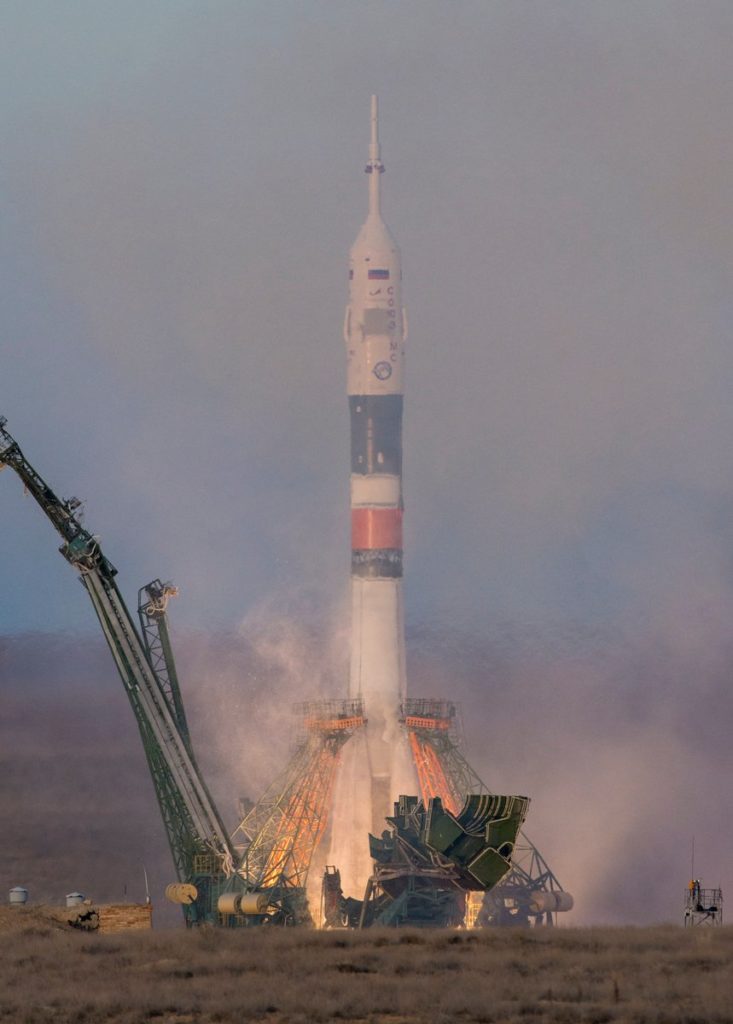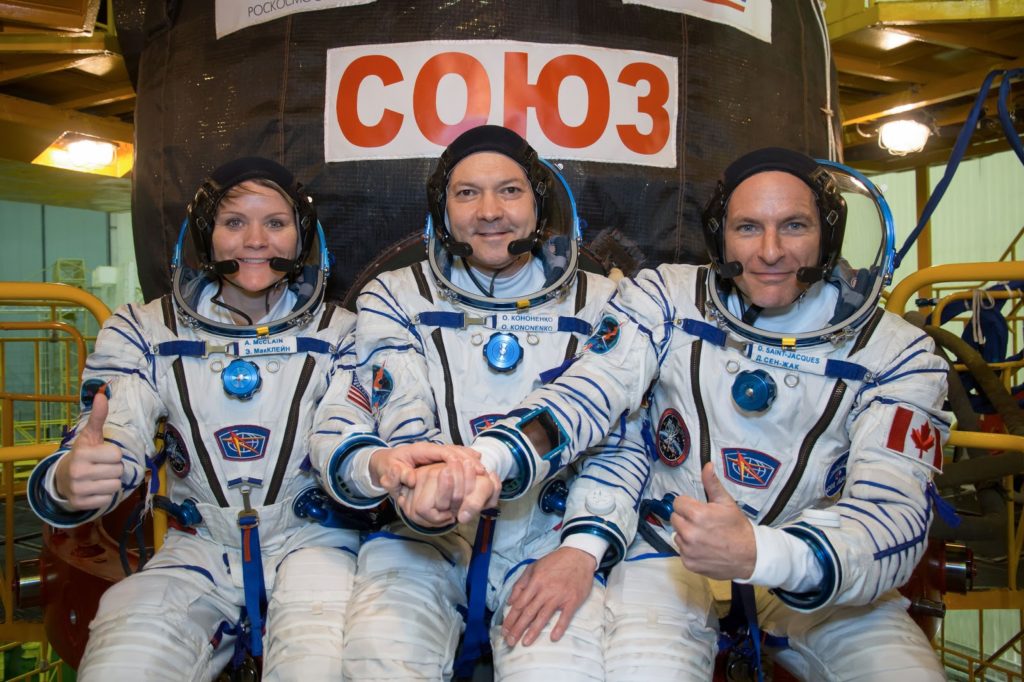RocketSTEM –3 December 2018
KENNEDY SPACE CENTER, FL –
The International Space Station (ISS) is back to full strength with a
crew of six astronauts and cosmonauts following Monday mornings (Dec. 3) safe and critically important launch of the
Soyuz MS-11 spacecraft with three crewmates aboard and successful lunchtime docking
– which thereby fully restores the Russian Soyuz carrier rocket to flight
status after a harrowing failure only two months ago.
“Welcome to the
International Space Station, #SoyuzMS11 crew!” tweeted ISS Commander Alexander Gerst, leader of the
Expedition 57 mission.
“Expedition 57 is at full
count now.”
The high stakes Soyuz blastoff restores the only currently
viable path for humans to reach the space station less than two months after
the prior launch of a two man Russian Soyuz crew in mid-October ended in
failure with a safe emergency abort two minutes after liftoff from Kazakhstan.
The Soyuz MS-11 capsule carrying Anne McClain of
NASA, David
Saint-Jacques of the Canadian Space Agency, and Oleg Konenenko of
Roscosmos launched flawlessly at 6:31 a.m. EST, 1131 GMT (5:31 p.m. Baikonur time) from the Baikonur
Cosmodrome in Kazakhstan.
US, Canadian, Russian trio of McClain, Saint-Jacques and Konenenko docked to
the space station’s Poisk module at 12:33 p.m. as the ships were soaring 251
miles above Earth.
conducting leak checks to confirm a hard mate, hatches between the two
spacecraft – Soyuz and ISS – were opened two hours later at 2:37
p.m.
a six month stay at the orbiting outpost.
to all international partners for preserving continuous human presence on
Earth’s embassy in space, for more than 18 years now,” tweeted Gerst.
assist and greet the arrival of the SpaceX Dragon CRS-16 cargo spacecraft whose
launch slipped a day and is now on track for liftoff Wednesday, Dec. 5 at 1:316
p.m. EST. Space UpClose is covering the launch events at KSC.
Expedition 57 Commander Alexander Gerst of
ESA (European Space Agency) from Germany, NASA Flight Engineer Serena
Auñón-Chancellor from the US and Roscosmos Flight Engineer Sergey Prokopyev from
Russia, who have been in orbit since June.
Expedition 57 mission. They are scheduled to depart the station in their Soyuz
capsule just before Christmas on Dec. 20.
departing spacefarers undock from the space station, says NASA.
General Dmitry Rogozin [Roscosmos] and the entire @NASA and @roscosmos
teams for their dedication to making this launch a success. Ad Astra!”
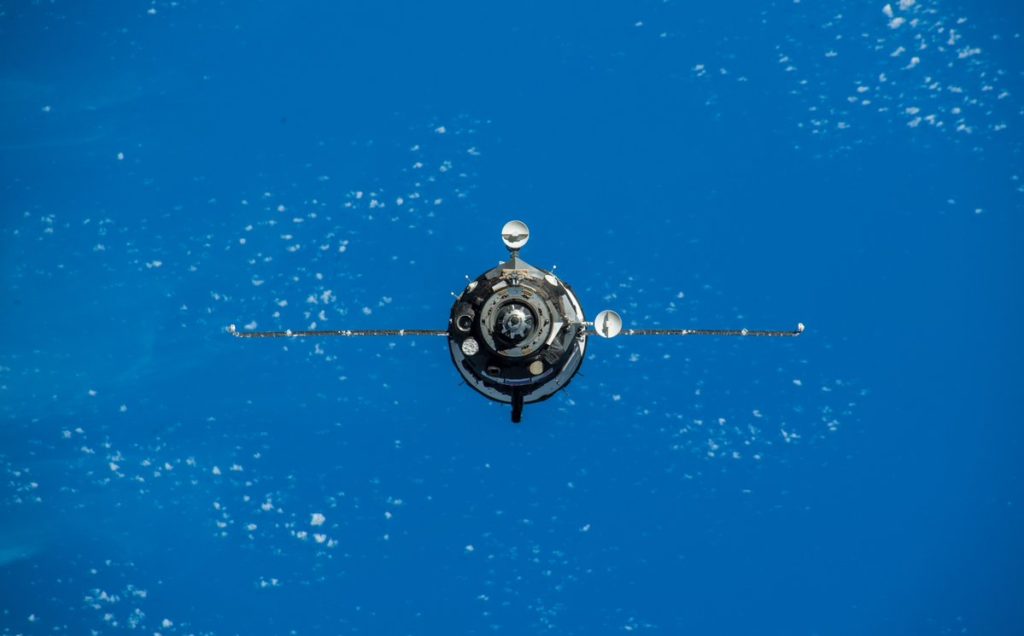 |
| Soyuz MS-11 spacecraft approaches ISS |
Russian Space Agency @roscosmos and all international partners for a
flawless launch of #SoyuzMS11. And welcome to space, @Astro_DavidS,
@AstroAnnimal and Oleg!” said Gerst.
crew on Oct 11 ended in failure two minutes after liftoff with the sudden triggering
of an emergency abort separation of the Soyuz MS-10 capsule from the Soyuz FG
carrier rocket due to a deformed sensor on the core stage.
crewmates comprising Russian commander Alexey Ovchinin and
NASA flight engineer Nick Hague survived without injury and excellent health when the Soyuz soft landed
safely by parachute. That was the first Soyuz crew launch failure since 1983.
more than six months conducting hundreds of science
investigations in fields such as biology, Earth science, human
research, physical sciences and technology development, providing the
foundation for continuing human spaceflight beyond low-Earth orbit to the Moon
and Mars,” says NASA.
are sponsored by the U.S. National
Laboratory on the space station, which Congress designated in
2005 to maximize its use for improving quality of life on Earth. Highlights of
upcoming investigations include experiments in forest
observation, robotic
refueling, and satellite
deployment.”
continuing onsite coverage of NASA, SpaceX, ULA, Boeing, Lockheed Martin,
Northrop Grumman and more space and mission reports direct from the Kennedy Space
Center, Cape Canaveral Air Force Station, Florida and Wallops Flight Facility,
Virginia.
and human spaceflight news: www.kenkremer.com –www.spaceupclose.com – twitter
@ken_kremer – email: ken at kenkremer.com
journalist and photographer based in the KSC area.
Ken’s photos are for sale and he is available for lectures and outreach events
SpaceX Falcon 9/CRS-16 launch to ISS, NASA missions, ULA Atlas & Delta
launches, SpySats and more at Ken’s upcoming outreach events at Quality Inn Kennedy Space
Center, Titusville,
FL, evenings:
4, 5: “SpaceX Dragon CRS-16
resupply launch to ISS, SpaceX Falcon Heavy & Falcon 9 launches, upcoming SpaceX
Falcon 9 USAF GP3 3-01, NRO & USAF Spysats, SLS, Orion, Boeing and SpaceX Commercial
crew capsules, OSIRIS-Rex, Juno at Jupiter, InSight Mars lander, Curiosity and
Opportunity explore Mars, NH at Pluto, Kuiper Belt and more,” Kennedy Space
Center Quality Inn, Titusville, FL, evenings.
Photos for sale


